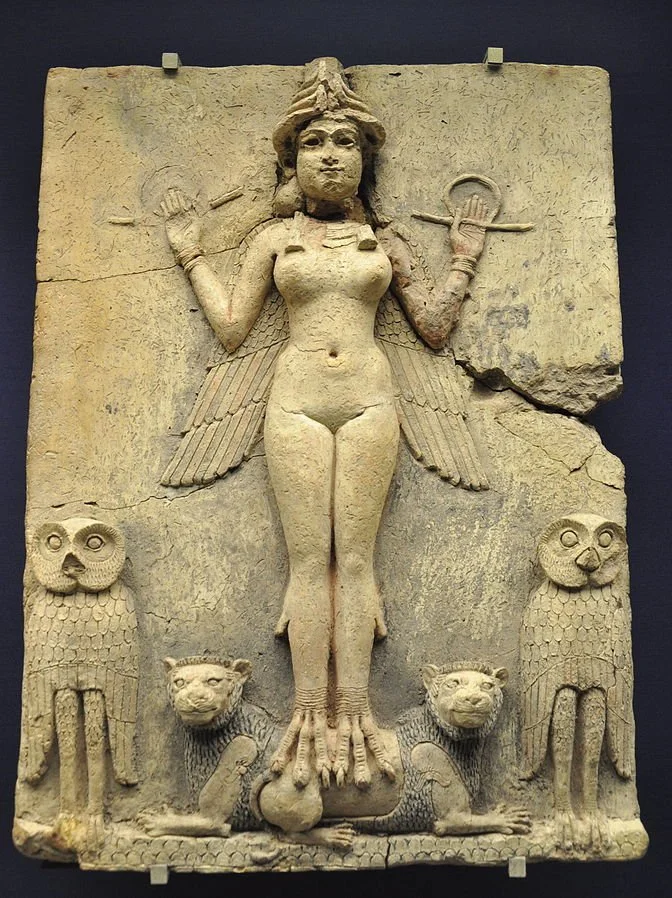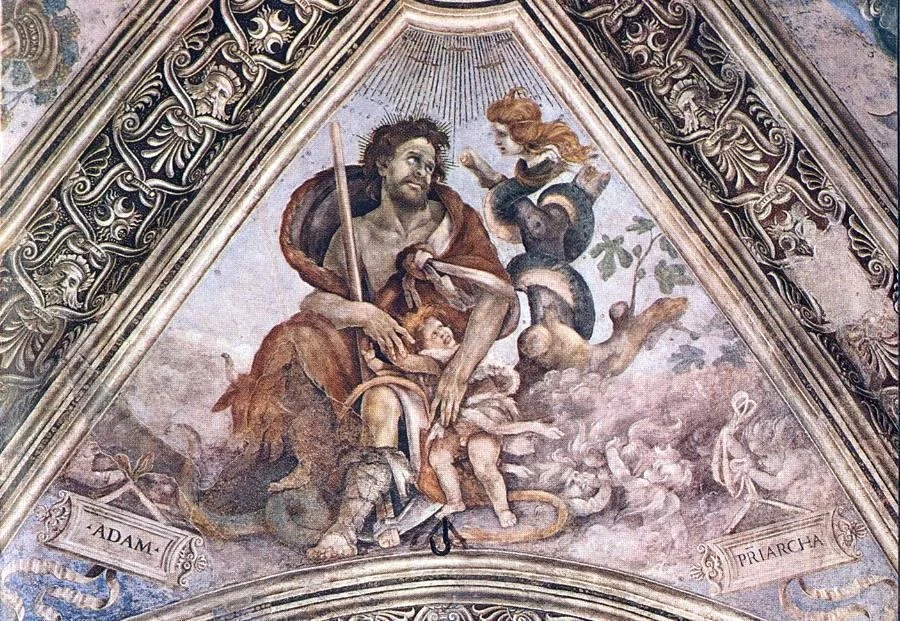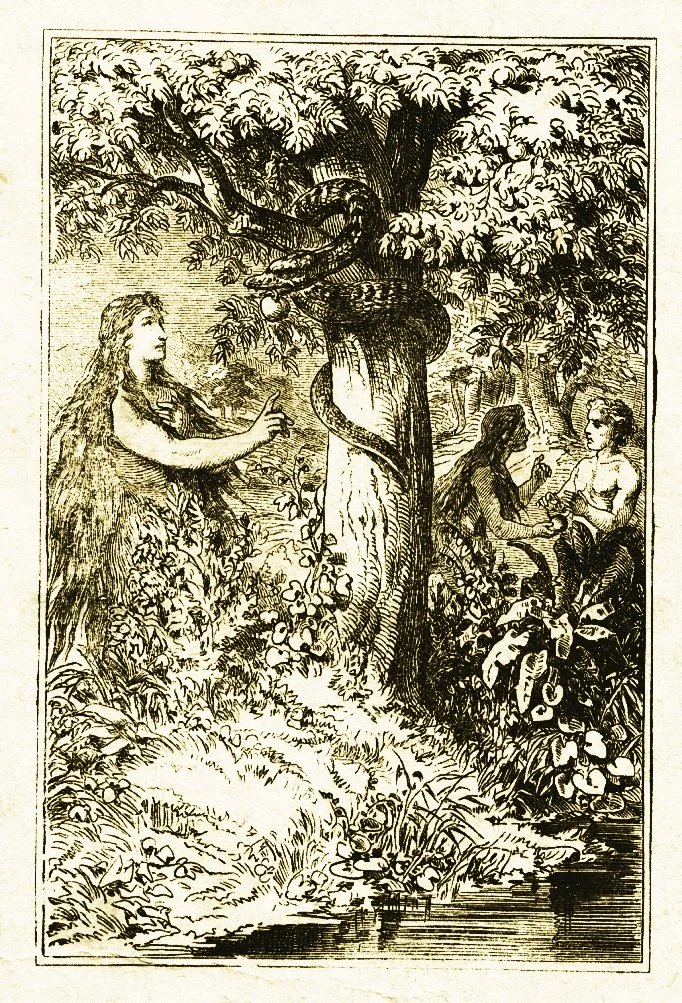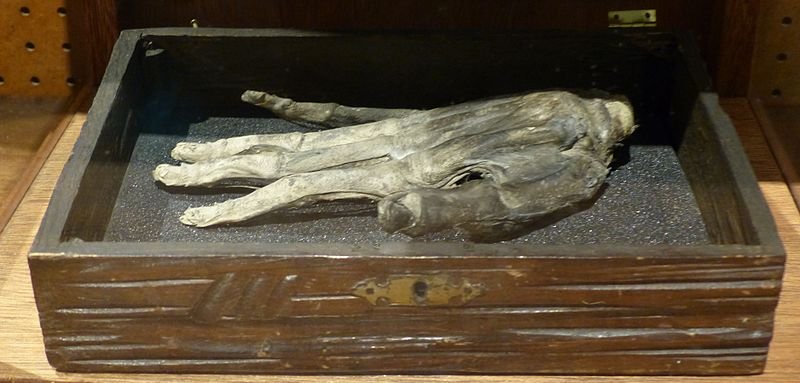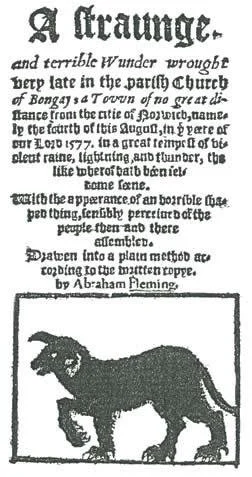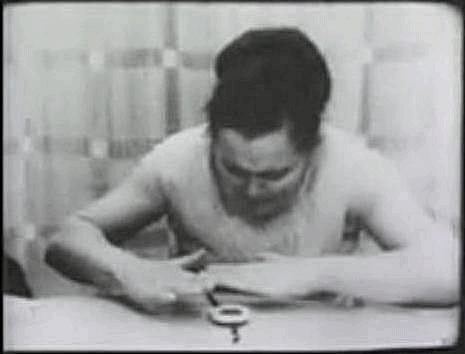The Hidden Ones: Sect of Assassins
In the Middle Ages, contact between Islamic cultures and Europe introduced many new things to the West. Along with luxury goods that were acquired, so too new words were brought to Europe, words such as crimson, saffron, jasmine, taffeta, and musk. Comfortable new styles of silken garb were imported, as was the word for them, pyjamas. And new sweets were discovered, along with the word candy. Alongside such commodities, tales were also imported to the West through this commerce. One of the first Europeans to travel the Silk Road, that superhighway of commercial and cultural intercourse, was Marco Polo, an Italian merchant and also a spinner of fanciful tales. One tale he told was of a certain group of Muslims who followed a mysterious old man, whom he said had created a veritable paradise on earth, a bountiful garden into which he had channeled canals that carried not only flowing water, but wine, and milk, and honey. According to Polo, the Old Man of the Mountain commanded the absolute loyalty of his subjects, who truly believed that they resided in paradise on Earth. And when the Old Man wanted something done about an enemy of his, he plied some youthful follower with a drug that caused them to sleep, at which point he would take the youth out of his paradise. Upon waking, the youth believed he had been ejected from heaven and was told that in order to obtain reentry, he would have to do the Old Man’s bidding, to kill his enemy. Thus, Polo explained, the Old Man drugged and manipulated his disciples and transformed them into his personal legion of murderers. This tale illustrated the growing lore surrounding a distinct group of Muslims whom Europeans had encountered throughout the Crusades, when members of this Order began killing or attempting to kill European Crusaders at their Grandmaster’s command. Europeans quickly learned to fear their daggers, just as the Order’s other enemies in the region long had, and a black legend was developed. These were fanatics, it was said, who kept their secret conclaves in impregnable castles. They were deluded, it was believed, by a heretic cult leader and kept mad with intoxication on hashish. This was the origin of their name, the hashishin, it was claimed, and thus another word entered our lexicon, derived from this word: assassin, a noun, but soon a verb as well, assassinate, to murder suddenly, using subterfuge or surprise, for religious or political reasons. This Order of Assassins was no fairy tale, as some of Marco Polo’s stories were, and they had long been quite successful in destabilizing and defeating their enemies purely through assassination. Many were the military commanders, viziers, emirs, Imams who fell beneath their blades. Among the most famous of those was Conrad of Montferrat, the Crusader King of Jerusalem. It is difficult to always be certain whether an assassination was carried out by them or perhaps by others, and this was actually one of the benefits of their assassinations, that they destabilized by creating paranoia and confusion, but among the rumored and real assassination plots attributed to them were attempts on the lives of a Mongol Khan; multiple efforts to kill Saladin, the sultan who spearheaded the Counter-Crusade, and even a failed attempt on the life of Edward Longshanks, Hammer of the Scots and future King of England, during the Ninth Crusade, called Lord Edward’s Crusade. Real though the Assassins were, though, that does not mean they weren’t surrounded by myths and misconceptions.
*
The reason I was drawn to discuss this topic directly after my post on the Thuggee should, I think, be quite obvious. It’s nothing to do with the era or the locale or the culture, as the strangler bandits of 18th and 19th century India have none of this in common with the 11th century Arab Muslim Order of Assassins active in Persia, Syria, and elsewhere for a few hundred years. Rather, I see a connection of theme. While the Thugs were not the organized, hierarchical religious cult that they were made out to be and the Assassins were followers of a specific creed who devoted themselves entirely to accomplishing the goals of their Imam, both were secretive brotherhoods among whom were members specially tasked with murder of a most intimate and gruesome sort. The names of both have entered the lexicon to represent those who commit similar crimes. And both became the storied boogeymen of European imaginations during the eras in which they were active. Indeed, it is the fact that Assassins have been so mythologized in fiction that they have become enshrouded in multiple layers of false history, much like Thuggee. The modern imagination has been quite drawn to the Order of Assassins, as they have appeared in numerous novels, by those of such vastly different talents as Umberto Eco and Dan Brown. They were the inspiration for the League of Assassins led by Batman’s nemesis Ra's al Ghul in DC comics, and they were the basis of the Faceless Men in George R. R. Martin’s unfinished A Song of Ice and Fire book series… that’s the assassin’s guild that little Arya Stark joins, as also depicted in the television series Game of Thrones. But the most in-depth treatment of the Order of Assassins in modern fiction, the reason it is so well-known today, and the source of the most creative fabrications about the group is the Assassin’s Creed video game franchise, from which I took the name of this episode. I’ll be the first to say I’ve enjoyed these games, and being a fan of historical fiction, I appreciate how they weave in real historical figures and events into their storylines. But if one were to confuse the story presented in these games as real history, one would believe that the Assassins were actually heroes fighting for freedom against the proto-Fascistic Knights Templar, and that actually both groups were, in fact, evolutions of even older secret societies going back to ancient Egypt, and that these groups were vying for control of ancient artifacts that contained the advanced technology of a long extinct species that was a pre-cursor to humanity. It’s a cool story, obviously science fiction/fantasy, not something to debunk but to enjoy. However, as it weaves in such myths as the existence of Atlantis and such mythical figures as Hermes Trismegistus, it might easily confuse someone as to what might be real, historically, and what false. But this question could have been asked about the Assassins long before the elaborate mythmaking of modern entertainment featuring them, as they were mythologized even from the beginning.
Marco Polo, mythologizer of the East.
A cursory understanding of the Muslim world and the conflicts within it must be achieved before anyone can really understand the origins of the Order of Assassins. I say cursory because this is a topic far too expansive and complicated to possibly do justice in one brief segment of one standalone podcast episode. So we will look, in admittedly broad strokes, at the background of the rise of the Assassins because we need the context. After all, the Black Legend of the Assassins propagated by Europeans purposely ignores the actual religious context of the sect and their beliefs. Before the Crusades, this could be explained by ignorance, but after the Crusades, when Europeans came to better understand the complex religious fabric of Islamic society, they then purposely ignored the distinctions between one sect or denomination and another, choosing to portray them all as godless infidels who worship an anti-Christ. This contributed greatly to the spread of myths about the Assassins, and we don’t want to be like Crusaders in this regard. We must first understand that the Prophet Muhammad unified the Arab world under the Islamic faith and also established a social and political order characterized by multiculturalism, religious freedom, and social justice, as represented in the Constitution of Medina. But we must further understand that, since his death, the Islamic world and faith had been long troubled by disunion and schism. Much of this had to do with disagreements over succession, as it was believed by many that the next ruler should be of Muhammad’s lineage, specifically his cousin and son-in-law, Ali, but instead the mantle of caliph passed to his father-in-law, Abu Bakr. This essentially political faction supporting Ali for the job, Shīʿatu ʿAlī, or “followers of Ali,” transformed through the years to become a doctrinal branch of Islam, Shīʿa or Shīʿism, the Shīʿite view being that Ali had been designated to succeed Muhammad as caliph and Imam, and that only those descended from Ali were divinely ordained to lead. Ali did eventually take up the role as leader, but this did not put an end to the internecine strife. A new Caliphate was established by the Umayyad clan in resistance to Ali’s sovereignty. The Umayyad Caliphate lasted about a hundred years before another revolution, led by the Shīʿite Abbasid clan toppled them and established a third Caliphate. Throughout these conflicts, the schism of Islam became more and more concrete, with Shīʿism on one side and Sunnism, a more orthodox camp who rejected the notion that Muhammad ever intended to establish a blood dynasty, on the other. But even within the Shīʿa branch of Islam, there was much diversity of belief and much disagreement, and it was from among these denominations that the Assassins would rise.
Many of the doctrinal disputes within Shīʿa Islam had to do, yet again, with the legitimacy of the succession of Imams. This was not only about Earthly power and legitimacy; it was about prophecy. During the Abbasid Caliphate, a number of secret religious societies appeared, and with them the notion of esoteric knowledge being present in the Quran. It was believed that the Islamic scriptures carried some secret, hidden messages, that only the true, divinely ordained Imam and his initiates could discern. Among the secrets of the Quran interpreted was the idea that there would only be twelve divinely ordained Imams, and the twelfth would be hidden away and mystically preserved, in Occultation, it is called, until such time as he returns, a messianic figure called the Mahdi, whose appearance will signal the end times. This remains the belief of Twelver Shīʿites to this day, and belief in the return of an Imam as the Mahdi has become a common feature of Shīʿa Islam generally. However, some other subsects have differed regarding the succession of Imams and the number of Imams. The second largest branch of Shīʿa Islam, after the Twelvers, believe that when the Imam Shīʿites recognized as the sixth true Imam died and passed the Imamate to the son recognized by Twelvers as the seventh Imam, it should have and indeed did actually pass to his eldest son, Isma'il ibn Jafar. The Isma’ili Shīʿa believe he was the true inheritor because of his great understanding of the hidden meaning of texts, and that he did not actually die, as was claimed, but rather was hidden away from the Abbasids. The fact that he was missing, presumed dead or in hiding, led some Isma’ili to believe that he was actually the last Imam, waiting in Occultation to return as the Mahdi, and they became known as the Seveners, as Isma’il was considered the seventh Imam. Whether proponents of Isma’il as simply the seventh Imam or as the last Imam and the coming Mahdi, Isma’ilism spread across the Islamic world through aggressive proselytizing. In the tenth century, an Arab dynasty called the Fatimids, who traced their lineage back to Ali and Muhammad’s daughter Fatima and were recognized as legitimate Imams by some Isma’ilis, began to wrest control of the Mediterranean coast of Africa and Western Asia from the Abbasids. The Fatimid Caliphate saw a further schism early in the 11th century, when upon the death of one Imam, the son whom he had publicly named as his successor, Nizar was thereafter prevented from succeeding to the Fatimid throne in Egypt as the next Caliph-Imam by a dictatorial coup. Thus the Nizari Isma’ilis were born. Nizar was later taken captive in battle against his usurper and executed, but one of his most devoted lieutenants, Hassan-i Sabbah, who had captured and made impregnable a castle called Alamut in the mountains of northern Persia, took Nizar’s son, whom the Nizari Isma’ili then considered the true Imam, under his protection and established a Persian Nizari Isma’ili state. Hassan-I Sabbah was the original Old Man of the Mountain who would enter legend centuries later, and his Nizari Isma’ili, a state with no army and many enemies, were the sect of Islam that would become known to the world as Assassins.
19th century engraving of Hassan-I Sabbah
The coup against Nizar in Egypt had been engineered by the commander of the armies there, and this has been seen as one of the principal reasons that Hassan-I Sabbah never gathered an army to the Nizari Isma’ili cause. Instead, he developed a three-pronged approach to war, the first being fortification. As Alamut Castle proved to be a safe refuge, he undertook to capture other castles and thereby expand his Imam’s territories without armed conflict. This he managed through the second prong of his approach, infiltration. There are numerous stories of the way that Hassan-I Sabbah captured Alamut. One is that he converted the owner to his creed, and another that he simply snuck so many of his men in that, slowly but surely and unnoticed by its current occupants, he was taking possession right under their noses. Such stories are impossible to credit with any certainty, but considering the kinds of stealth and subterfuge he would go on to utilize, such tactics must have been among his favorites. And his final approach to war was tactical murder, or what would be called today assassination. Hassan-I Sabbah did indeed train killers and send them out with daggers, directing them to use guile and disguise to get close enough to their targets to end their lives. And these agents did indeed expect to die in the completion of their tasks, and were indeed promised rewards in paradise upon their deaths. The policy itself, of effecting political and social change through strategic killings, can be seen to have evolved rather organically out of Islamic teachings and recent history. Passages in the Quran were long interpreted as approving of regicide in extreme cases, when leaders were wicked. And Hassan-I Sabbah was not the inventor of political murder. Indeed, of the first four Caliphs after Muhammad, the Rashidun Caliphs, three of them, including Ali, were assassinated. Hassan-I Sabbah was just the first to place such importance on assassination as opposed to field warfare, to strike terror into enemies who would gladly risk their lives in battle but feared an ignoble death in their homes. Hassan-I Sabbah did not invent assassination, but he perfected it.
Since I use the word terror to describe the effect that Hassan-I Sabbah’s tactics had on his enemies, I should address a certain analogy that has been made in modern times, likening his Order of Assassins to terrorists. The Assassins of Nizari Isma’ilism have not only been likened to Islamic terrorists, but also terrorists of the IRA, or Kamikaze bombers. Like the IRA, the Assassins relied on a constant threat of sudden violence to intimidate, and like the kamikaze, Assassins were fully expected and in fact intended to die in completion of their missions. But of course, the comparison to modern-day Islamic terrorists is the most obvious, being that they share cultural and religious backgrounds. There are other commonalities as well, in that, like the Assassins, suicide bombers intend to sacrifice their lives to get close enough to their enemy that they might inflict harm, again to intimidate and terrorize. Like the Assassins, they rely on this approach to warfare against militarily superior enemies, and they believe they will be rewarded in paradise for their acts of violence against those they see as the enemies of their faith. Like I said, the similarities seem obvious, even apt, but on closer consideration, the Nizari Isma’ili Assassins are far different, in both motivation and practice. First, as we have said, their choice to rely on assassination was part of a conscious refusal to gather armies and engage in traditional warfare, not resorted to because of military inferiority. And second, the Assassins used assassination out of a kind of chivalry that was borne out of Arabian culture. Even long before the rise of Islam, single combat was preferred to the destruction of war. “Pure” warfare, in the Arabian sense, avoided any unnecessary loss of life, and strictly prohibited the killing of women and children or the elderly. The Assassins were never known to target such vulnerable or innocent people, and in avoiding actual battlefield engagements, the Assassins were returning to the Arabian roots of pure warfare, eliminating leaders in a kind of forced single combat and thus saving the lives of the rank and file. This character of the Assassins’ tactics cannot be further from the reality of Islamic terrorism, which is all too accepting of collateral damage.
16th century depiction of the capture of the Assassin fortress of Alamut
One of the principal misunderstandings about the Assassins deriving from the myths surrounding them has to do with the group’s name. There was for a very long time a robust debate about the etymology of the word “assassin,” with numerous theories put forth to explain where the word came from. The word entered European languages via the Latin, assasinus, but it was long unclear where it had come from before that. One theory is that it was a corruption of the Arabic word for the weapon that Assassins chose as their sole means of killing, sikkin, or dagger. Another theory was that it was an application of the Arabic word for a night watch, asas. Others said it came from the ancient Persian word shahanshah, meaning “king of kings” in reference to their leader. Perhaps the most convincing is that the term was derived from the name of their first leader, Hassan-I Sabbah, such that the word is a corruption of the Persian hasaniyyun, or “followers of Hasan.” However, the truth of the matter was not figured out until the 18th century, by Baron Silvestre de Sacy, who in his study of Isma’ilis determined that the term was derived from the name of the drug they were said to use: hashish. Thus they were called the Hashishiyyun, or hashashun, literally “hashish-eater,” and the word simply evolved from there as it was taken into other languages. The fact of this etymology has done much to perpetuate the myth of the Nizari Ismai’ili Assassins as drugged stooges, as portrayed by Marco Polo and others. In fact, the use of hashish and other powerful narcotics, like opium, was widespread in Islamic society throughout the Middle Ages. But the truth is that this was a total misnomer. Crusaders and other Europeans heard the term being used not by the Nizari Isma’ili to describe themselves, but by the enemies of the Nizari Isma’ili. They read the term in anti-Isma’ili polemics written by Sunnis who despised the Nizari Isma’ili, not only for their success in converting Muslims to their creed, but also because they lumped all Isma’ili in together, whether Nizari or Sevener. Indeed there was one particularly militant subsect of Sevener Isma’ili, completely distinct from Hassan-I Sabbah’s Nizaris, called the Qarmatians, who in 930 CE sacked both Medina and Mecca, and who were hated for desecrating some holy sites and artifacts. Specifically, they are said to have dumped corpses into the Zamzam Well, which was said to have miraculously produced water during the time of Abraham, and they stole and held for ransom the Black Stone, a relic, thought to be a meteorite, that is said to have fallen from heaven to mark the place where Adam and Eve should build the first earthly temple. So Sunni writers generalized all Isma’ili as heretics bent on destroying Islam, and they used the term Hashishiyyun not literally, but rather to indicate that they were men of low social status and weak moral character. So we find that the word “assassin,” as a name for this sect, had nothing to do with the drugs and everything to do with an ad hominem attack on the sect. In fact, among the Nizari Isma’ili, only a select few were ever tasked with committing assassinations, and they called themselves fidai, meaning “devotee.”
So we see that the Black Legend of the Assassins was nothing but mythmaking all along. Even if we were to reject the evidence that Sunni polemics called Nizari Isma’ili “hashish-eaters” only metaphorically, logic tells us that any such accusation must have been a lie. The Nizari Isma’ili were highly disciplined and sober. The clearest evidence of their strict sobriety is that Hasan-I Sabbah is known to have actually executed his own son for drinking wine! Moreover, the fidai tasked with assassinations could not have been drugged-out pawns. Their role required a great deal of education, learning several languages so that they could infiltrate different cultural communities. And they had to be quick-witted, resourceful, and adaptable in order to get close to their targets. Indeed, there were some cases in which fidai insinuated themselves into the inner circle of their targets and posed as their closest advisors and friends for long periods of time before suddenly producing a dagger and revealing themselves to have been assassins all along. It is simply not credible that they were also abusing hashish the whole time. Some may hear hashish and think, “That’s not so powerful or harmful of a narcotic. It’s just cannabis.” But smoking a little hash today is quite different that eating hash back then. There is a 19th-century book called the Hasheesh Eater by Fitz High Ludlow in which he described his hallucinatory trips, ingesting higher and higher quantities of the drug, until, as he described it: “time [and] space expanded… The whole atmosphere seemed ductile, and spun endlessly out into great spaces surrounding me on every side.” All this to say, hashish eating would cause one to have an intense psychedelic trip, one that would certainly prevent anyone from competently disguising themselves and convincingly posing as someone else in order to get near a heavily guarded target. Like opium eating, it was more likely to cause someone to lie down than to leap into action. Anyone who has ever taken too many edibles knows exactly what I mean. So in the end we owe the legend of the Assassins to the ignorance of the Crusaders. The myth repeated by Marco Polo, of the Old Man of the Mountain and his earthly Paradise, reentry into which was promised in exchange for committing assassinations, would have been seen as obvious fiction if anyone spreading it had actually visited Alamut castle, the headquarters of the sect, which was no paradise flowing with milk and honey. And other such myths, such as that the Assassins were chosen as children, kept in isolation and manipulated their whole life, or that they would gladly leap to their deaths for no reason other than the simple command of the Old Man of the Mountain, could also have been easily dismissed if any European studying them had relied on written records other than those composed by the enemies of the Nizari Isma’ili. The problem was, the Nizari did not leave their own records behind. In 1256 CE, the Mongols massacred them, razing their castles, and burning their libraries. As a result, the Black Legend that their enemies had created about them would be accepted as truth for 700 years. And even today, with a new Assassin’s Creed video game releasing later this summer, the Assassins—if we want to still call them by that term, which they would have found offensive—live on in memory only through fantasy.
*
Until next time, think about this: they say that history is written by the victors, but rather, I’ve found that it’s actually myth that they leave behind, and historians are able to set the record straight.
Further Reading
Daftary, Farhad. The Assassin Legends: Myths of the Isma’ilis. I.B. Taurus & Co., 2001.
Hodgson, Marshall G.S. The Secret Order of Assassins: The Struggle of the Early Nizârî Ismâî'lîs Against the Islamic World. University of Pennsylvania Press, 2005.
Waterson, James. The Ismaili Assassins: A History of Medieval Murder. Frontline Books, 2008.
































































